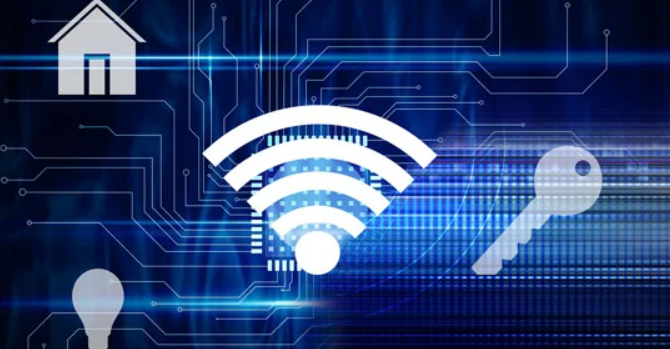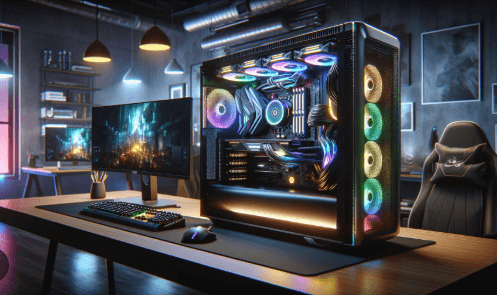The concept of the “smart home” has evolved significantly over the last few decades. What once seemed like a futuristic idea has now become a reality for millions of homeowners. Smart homes were initially created to offer comfort and convenience, but today, they also provide a strong layer of security. The transformation of smart homes has been driven by advancements in technology, the desire for greater efficiency, and growing concerns about safety.
In this article, we will explore the history and evolution of smart homes, from their humble beginnings in the realm of convenience to their current role as security hubs. We’ll also dive into how the integration of artificial intelligence (AI), the Internet of Things (IoT), and advanced security systems has changed the way we live in our homes.
1. The Birth of Smart Homes: Convenience at the Core
1.1 Early Innovations in Home Automation
In the early stages, smart homes were primarily about enhancing convenience. The introduction of home automation systems allowed homeowners to control lighting, temperature, and appliances remotely. One of the first innovations was the use of programmable thermostats like the Nest Learning Thermostat, which allowed people to set temperature schedules.
See also: How Augmented Reality is Revolutionizing Retail and E-Commerce
1.2 Remote Control Devices
Devices such as remote-controlled lights, fans, and home entertainment systems started appearing in the late 20th century. These gadgets were typically controlled by physical remotes or through wired connections. The true breakthrough came with the advent of wireless technology, which opened up the door for more sophisticated devices.
2. The Rise of Smart Assistants: The Gateway to Home Automation
2.1 The Introduction of Virtual Assistants
By the 2010s, virtual assistants like Amazon Alexa, Google Assistant, and Apple Siri became a significant part of the smart home revolution. These voice-activated assistants acted as a central hub for managing various devices in the home. They offered convenience through simple voice commands, enabling users to control lights, locks, thermostats, and even order groceries.
2.2 Integration with IoT Devices
The widespread adoption of IoT devices in smart homes marked a key turning point. IoT technology enabled devices to communicate with each other seamlessly. For example, your smart refrigerator could notify you when groceries were running low, and your smart thermostat could adjust the temperature based on your daily routines. This integration enhanced the overall convenience of managing home systems remotely, turning houses into automated environments that required less direct human intervention.
3. Smart Homes Evolve: The Shift Toward Energy Efficiency
3.1 Energy-Saving Solutions
As the demand for energy-efficient solutions grew, so did the adoption of smart technologies designed to reduce energy consumption. Smart thermostats, energy-efficient lighting, and appliances became popular because they allowed homeowners to monitor and control their energy use in real-time.
3.2 Smart Metering and Sustainability
Smart meters became widely available, enabling users to track their energy usage more accurately. This shift helped people become more conscious of their carbon footprint, leading to more sustainable living practices. Many energy companies began integrating smart technologies into their grid systems, allowing for more efficient energy distribution.
4. The Turning Point: Smart Homes and Security Integration
4.1 Introduction of Smart Security Systems
As smart home technology matured, security became one of the primary concerns for homeowners. This shift led to the rise of smart security systems. These systems, which integrated cameras, sensors, motion detectors, and alarms, offered homeowners the ability to monitor their property in real time via their smartphones or other connected devices.
4.2 Smart Locks and Surveillance Cameras
Devices such as smart locks and doorbell cameras revolutionized home security. Smart locks allowed homeowners to remotely control access to their home, providing an added layer of convenience and security. Video doorbells like Ring gave people the ability to see who was at their door, no matter where they were, contributing to peace of mind.
5. The Role of Artificial Intelligence in Smart Home Security
5.1 AI and Predictive Security
The integration of AI in smart home devices took security to a new level. AI-powered security cameras, for example, could recognize faces and send alerts if an unknown person was detected. AI algorithms also allowed security systems to learn homeowner behaviors, anticipating unusual activity and notifying owners of potential threats.
5.2 Automated Response Systems
AI has enabled automated responses to security threats. For instance, in the event of a break-in or suspicious activity, smart security systems can automatically contact authorities or trigger alarms. This automated response enhances security and reduces the need for human intervention.
6. Privacy Concerns and Ethical Implications of Smart Home Security
6.1 The Trade-off Between Convenience and Privacy
As smart homes became more connected, concerns about privacy and data security grew. With devices constantly collecting data on users’ habits, preferences, and routines, homeowners became wary about how their personal information was being used and shared. This raised critical questions about data protection and the risks associated with hacking.
6.2 Regulatory Measures
In response to growing privacy concerns, several countries and regions have begun to implement regulations designed to protect users’ data. For example, the General Data Protection Regulation (GDPR) in Europe has made companies more accountable for how they collect and store personal data.
7. The Future of Smart Homes: AI, Robotics, and Advanced Security
7.1 Robotics and Automation in Home Security
As technology advances, the role of robotics in home security is becoming more prominent. Robotic security patrols could become a common feature of smart homes, providing both surveillance and physical deterrence to intruders. These robots could patrol the home, identify unusual activity, and even provide real-time reports to homeowners.
7.2 Enhanced AI-Driven Home Systems
In the future, smart homes will be even more intelligent. AI will continue to evolve, and we can expect to see emotion-recognition technologies, which could help identify threats based on emotional cues. Homes might be able to predict and prevent security risks before they even occur, making the future of home security not only more reactive but proactive.
FAQs about Smart Homes
1. What are the main benefits of a smart home?
A smart home offers convenience, energy efficiency, and improved security. It allows you to control devices remotely, automate routines, and monitor your property for safety concerns.
2. Are smart homes more secure than traditional homes?
Yes, smart homes often have enhanced security features, such as smart locks, surveillance cameras, and AI-driven systems that detect unusual activity. However, they also come with privacy risks, which need to be managed carefully.
3. What types of smart home security devices are available?
Common smart security devices include smart cameras, doorbell cameras, smart locks, motion sensors, alarm systems, and smart smoke detectors. Many of these devices can be controlled and monitored remotely.
4. Can smart homes help reduce energy consumption?
Yes, smart homes can improve energy efficiency through devices like smart thermostats, energy-efficient appliances, and smart lighting, allowing you to track and reduce energy usage.
5. How do AI-powered security systems work?
AI-powered security systems use machine learning algorithms to recognize faces, detect abnormal behavior, and anticipate potential security threats. They can send alerts or take automatic actions like contacting authorities when necessary.
6. Will smart homes be more affordable in the future?
As technology advances and becomes more widespread, the cost of smart home devices is expected to decrease. This will make smart homes more accessible to a broader range of people.
Conclusion
The evolution of smart homes from simple convenience to robust security hubs is a testament to the remarkable advancements in technology. Today, smart homes offer more than just comfort—they provide peace of mind through enhanced security features, energy savings, and the seamless integration of AI and IoT. As the technology continues to improve, we can expect even more intelligent and secure living environments that adapt to our needs, making our homes not only smarter but also safer.




